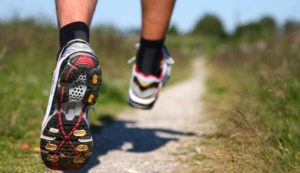REDUCE RUNNING INJURIES
Reduce the Risk of Running Injuries
Now that the warmer weather is here, it’s very appealing to get outside and enjoy the fresh air – and for many people that enjoyment includes running. Running is really a fabulous form of cardiovascular exercise, but unfortunately it can also lend itself to some very common injuries. Here are a few tips to keep you running healthy:
Listen to your body.
If something doesn’t feel right – it probably isn’t. Being aware of your body signs and signals is the first step to being a healthy runner. We all have weaknesses, imbalances and asymmetries in our bodies that with a repetitive activity like running, can sometimes lead to problems. If you’re experiencing pain, stop running for 3 days. After 3 days if you have no pain, then ease your way back into your running program. If you still have pain after 6 days, it’s time to see your physiotherapist to assess the issue.
Avoid the terrible too’s.
Doing too much, too soon, too fast is the #1 cause of running injuries. You need to give your body time to adapt to faster times and longer distances. Your muscles and joints need time to recover so they can keep up with your performance demands. Don’t rush the process. Stick to your running plan or schedule, and always take 1 complete rest day per week to give your body time to recover and repair. Increase your running goals gradually.
Cross-train.
Running is repetitive, and uses the same muscles over and over. Some of these muscles become over active and tight, while others become weakened. Running injuries, especially knee and hip related problems, are often a result of muscle weakness or imbalance. Cross-training and strength exercises for your core and lower body can help with these issues. Mix up your workouts. Go for a bike ride or a swim, and engage some or your different muscle groups.
Stretching.
Stretching is important. Make it a part of your pre and post running routine. Runners tend to be tight in predictable area such as; the hips, the knees, the hamstrings and the calf muscles. Stretching should be relaxing and never painful. Move slowly into your stretches and don’t rush. Hold them for 30 seconds and do not bounce. Ask a physiotherapist for a stretching program that will specifically target the aforementioned areas.
Wear the right shoes.
Your shoes are a very important piece of equipment. Have a foot or shoe specialist analyze your gait and fit you properly. If you start to feel pain while running such as sore arches, shin pains or achy knees – again, listen to your body. It’s time for a new pair of shoes. A good rule of thumb is to change your shoes approximately every 400 miles. Wearing the wrong shoes can lead to many foot problems. If you are experiencing foot issues – custom orthotics may help. Consult with a podiatrist.
References:
http://www.treloarphysio.com/blog/artic

